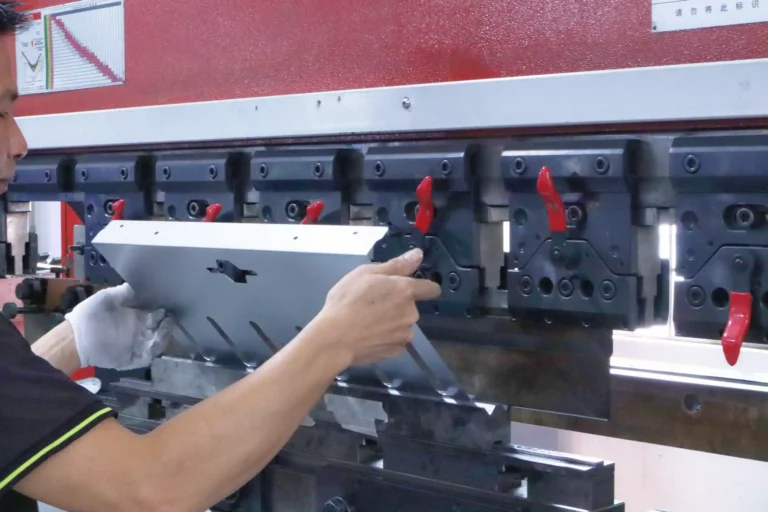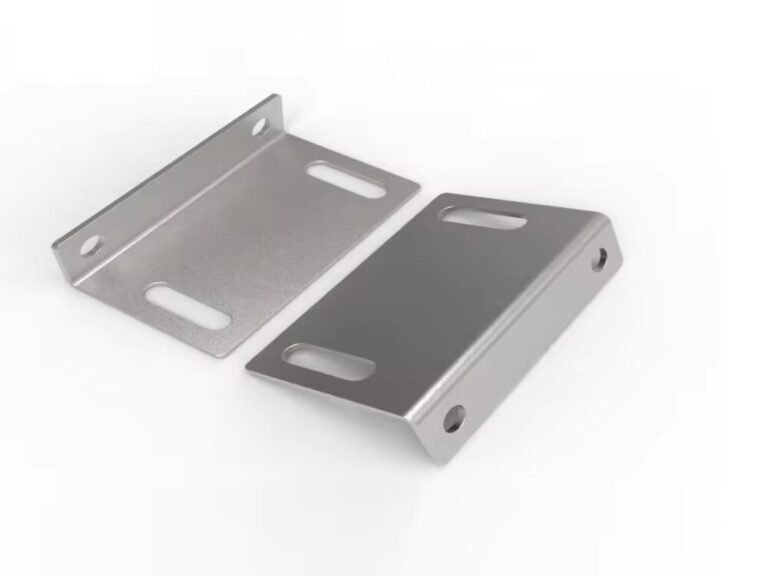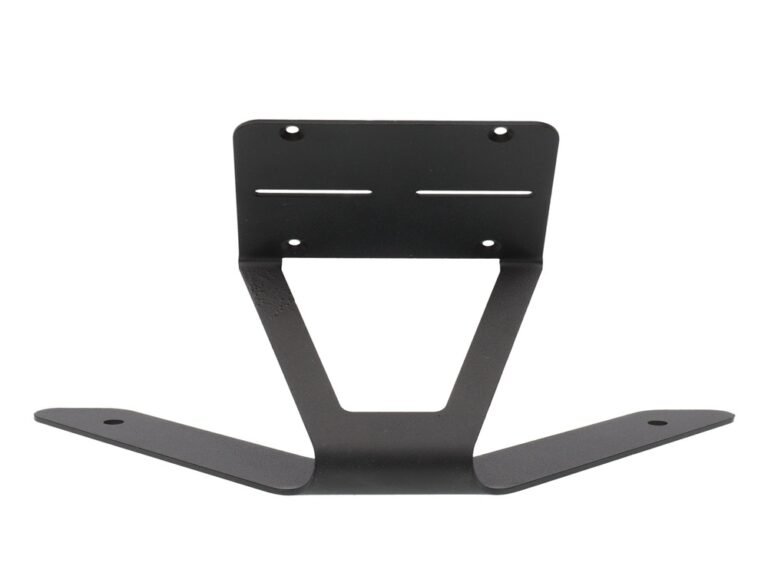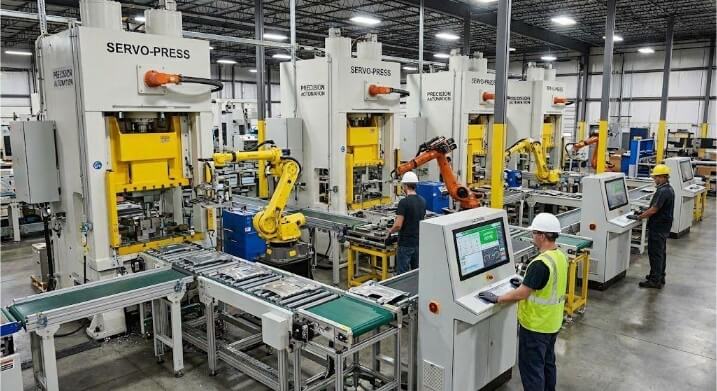Sheet metal folding can seem complex. You need to know the proper techniques to get the best results. Many manufacturers need help achieving precise folds, leading to product defects and increased costs. Understanding these basics can save you time and money and improve product quality.
Sheet metal folding involves bending metal sheets to create desired shapes. It’s a crucial step in many manufacturing processes. By using specific tools, we can achieve precise angles and consistent results.
Curious about the key fundamentals? Keep reading.

#1. Material Selection
Choosing a suitable material is crucial for successful sheet metal folding. Each type of sheet metal has unique properties that affect how it can be folded and used in manufacturing.
Types of Sheet Metal
Steel
- Steel is strong and durable, making it ideal for heavy-duty applications. It comes in various forms, such as stainless steel, carbon steel, and galvanized steel, each with specific uses.
Aluminum
- Aluminum is lightweight and resistant to corrosion. It’s easy to work with and is often used in applications where weight is a concern, like in the automotive and aerospace industries.
Copper
- Copper is highly conductive and has excellent corrosion resistance. It’s commonly used in electrical applications and for decorative purposes due to its appealing appearance.
Brass
- Brass, an alloy of copper and zinc, is known for its good machinability and corrosion resistance. It’s often used in plumbing, musical instruments, and decorative items.
Properties of Sheet Metal
Thickness (Gauge)
- The thickness of sheet metal, often measured in gauge, determines its strength and flexibility. Thicker sheets are more substantial but more complex to bend, while thinner sheets are more flexible but less durable.
Durability
- Durability refers to the metal’s ability to withstand wear, pressure, or damage. This property is crucial for applications that require long-lasting and resilient materials.
Malleability
- Malleability is the metal’s ability to be shaped and bent without breaking. Highly malleable metals are more easily folded and shaped, making them suitable for complex designs.
Corrosion Resistance
- Corrosion resistance is the metal’s ability to resist deterioration caused by environmental factors like moisture and chemicals. Metals like aluminum and stainless steel are known for their high corrosion resistance, making them ideal for outdoor and marine applications.
#2. The Fundamentals of Sheet Metal Folding
Understanding the basics of sheet metal folding is essential for achieving precise and efficient results in your projects.
What is Sheet Metal Folding?
Definition and Basic Concepts
- Sheet metal folding is bending a metal sheet to create specific angles and shapes. It involves applying force to the metal to change its geometry without altering its volume. This technique is widely used in manufacturing to create parts with accurate and consistent dimensions.
Difference Between Folding and Bending
- While folding and bending involve deforming sheet metal, fundamental differences exist. Bending typically refers to creating simple angles or curves using a single line of force. Folding, on the other hand, involves more complex manipulations, often using multiple points of force and specialized equipment to achieve precise and intricate shapes.
Sheet Metal Folding Tools and Equipment
Manual Tools
- Manual tools, such as hand seamers and bending brakes, are used for small-scale or detailed work. These tools require physical effort and are ideal for low-volume production or prototyping.
Brake Press
- A brake press is a powerful machine that uses a punch and die to bend metal sheets. It can create precise bends and is widely used in industrial applications.
Folding Machines
- Folding machines are specialized equipment designed to fold metal sheets with high accuracy and consistency. These machines can handle complex folds and are often used for high-volume production.
#3. Fundamental Techniques in Sheet Metal Folding
Understanding the critical techniques in sheet metal folding can help you achieve precise and consistent project results.
Air Bending
Process Overview
- Air bending involves placing the sheet metal on a die and using a punch to bend it into shape. The punch does not touch the die completely, allowing the metal to form an angle less than the die’s angle. This method is flexible and allows for various angles with the same setup.
Advantages and Disadvantages
- The main advantage of air bending is its versatility. You can achieve different angles without changing the tools, making small runs or prototypes cost-effective. However, the main disadvantage is that it can be less precise than other methods, as the angle can vary slightly due to material spring back.
Bottoming
How It Works?
- Bottoming, or bottom bending, involves pressing the sheet metal between a punch and a die until it touches the bottom of the die. This method ensures the angle is precisely formed and is less affected by spring back.
Applications and Limitations
- Bottoming is used when high precision is required. It is ideal for mass production, where consistent results are necessary. However, it requires different tools for different angles, making it less flexible and more expensive for short runs.
Coining
Detailed Process
- Coining is a process where the sheet metal is pressed with a punch into a die with significant force, causing the metal to conform precisely to the die’s shape. This method imprints the die’s angle and shape onto the metal, creating highly accurate bends.
When to Use Coining
- Coining is used when the highest precision and repeatability are needed. It is ideal for high-volume production where the consistency and quality of the parts produced justify the cost of the specialized tools.

#4. Factors Influencing the Folding Process
Several factors influence the success and precision of the sheet metal folding process. Understanding these can help you achieve better results.
Material Type and Thickness
The type and thickness of the sheet metal significantly affect how it behaves during folding. Different materials have varying levels of malleability, strength, and spring back. For instance, steel requires more force to bend compared to aluminum. Thicker materials need higher pressure and can be more challenging to fold accurately. Always consider the material’s properties and adjust your process accordingly.
Tool Selection
Choosing the right tools is crucial for effective folding. The punch and die should match the material type and desired bend angle. Different tools are designed for specific applications, such as air bending, bottoming, or coining. Using the correct tools ensures precision and reduces the risk of damaging the material.
Machine Settings
Pressure Adjustment
- Adjusting the pressure applied by the machine is essential for achieving the desired bend without causing cracks or deformations. Too much pressure can damage the material, while too little may result in incomplete bends.
Speed Control
- Controlling the speed of the folding process can impact the quality of the bend. Faster speeds can lead to less accurate folds and increased wear on the tools, while slower speeds provide better control and precision. Adjust the speed to find a balance between efficiency and quality.
#5. Common Issues and Solutions
Sheet metal folding can present several challenges. Knowing common issues and their solutions can help you achieve better results.
Springback
Causes and Prevention
- Springback occurs when the metal partially returns to its original shape after bending due to its elastic properties. This can lead to inaccuracies in the final product. The main cause is that the material’s internal stresses are not fully relieved during the bending process.
Minimizing Springback
- You can overbend the metal slightly beyond the desired angle to minimize springback. A more precise bending method, such as coining, can also help. Additionally, selecting materials with lower elasticity and adjusting the machine settings for higher pressure can reduce springback.
Cracking
Why Cracking Happens?
- Cracking occurs when the metal is stretched beyond its tensile strength during folding. This can be due to incorrect bend radius, poor material quality, or excessive force.
How to Prevent Cracking?
- To prevent cracking, ensure the bend radius is appropriate for the material’s thickness and properties. Use high-quality materials and avoid overloading the metal with excessive force. Preheating the metal can also reduce the risk of cracking, especially with thicker or more rigid materials.
Wrinkling
Reasons for Wrinkling
- Wrinkling happens when the metal is compressed during bending, causing it to buckle and form wrinkles. This is often due to incorrect material handling, improper tool selection, or insufficient support during the bending process.
Techniques to Avoid Wrinkling
- To avoid wrinkling, use tools that adequately support the metal during bending. Ensure the material is aligned correctly and secured. Adjust the machine settings to apply even pressure across the metal sheet. A backing tool can help maintain a smooth surface for thin or delicate materials.

#6. Safety in Sheet Metal Folding
Safety is paramount in sheet metal folding. Following proper safety protocols can prevent accidents and ensure a safe working environment.
Personal Protective Equipment (PPE)
Wearing appropriate PPE is essential when working with sheet metal. This includes:
- Gloves: Protect hands from sharp edges and metal fragments.
- Safety Glasses: Shield eyes from flying debris and sparks.
- Ear Protection: Reduce the risk of hearing damage from noisy machinery.
- Steel-Toe Boots: Protect feet from heavy falling objects.
- Long-Sleeved Clothing: Prevent cuts and abrasions on arms.
Machine Safety Features
Modern folding machines come equipped with various safety features to protect operators:
- Emergency Stop Buttons: Allow for immediate shutdown in case of an emergency.
- Safety Guards: Prevent access to moving parts and potential pinch points.
- Light Curtains: Detect if someone enters the machine’s operating area, stopping the machine instantly.
- Two-Hand Controls: Ensure the operator uses both hands to activate the machine, keeping hands away from danger zones.
Safe Handling Practices
- Manual Handling:
- Always lift with your legs, not your back, to avoid injury. Use proper lifting techniques and get assistance for heavy or awkward materials.
- Safe Machine Operation:
- Before operating any machinery, ensure you are adequately trained and familiar with the machine’s controls and safety features. Always perform regular maintenance checks to keep machines in good working order.
#7. Practical Applications of Sheet Metal Folding
Automotive Industry
- Car body panels
- Chassis components
- Engine parts
Aerospace Sector
- Aircraft skins
- Wing structures
- Fuselage sections
Construction and Architecture
- Roofing panels
- Structural supports
- HVAC ducts
Electronics and Appliances
- Enclosures and casings
- Mounting brackets
- Electrical panels
Conclusion
Mastering the basics of sheet metal folding is essential for achieving high-quality, precise, and efficient results in your projects. You can enhance your manufacturing process by understanding material selection, essential techniques, influencing factors, and joint issues. Prioritizing safety and recognizing the practical applications of sheet metal folding in various industries will ensure that you produce reliable and durable products.
Do you need a reliable sheet metal parts manufacturer? Shengen is the place to go. We specialize in sheet metal laser cutting, bending, surface finish, and CNC Machining. Reach out to Shengen Today and seek help from professionals!
FAQs
What is a bend radius in sheet metal?
The bend radius is the inside curve of a bend in the sheet metal. It determines how tightly the metal can be bent without causing damage, such as cracking or excessive stress.
How can I choose the correct folding technique for my project?
Choosing the proper folding technique depends on factors like the type of material, desired bend angles, precision requirements, and production volume. Techniques like air bending, bottoming, and coining are advantageous and suitable for different applications.
How do I troubleshoot common issues in the folding process?
To troubleshoot common issues:
- Springback: Overbend slightly and adjust pressure settings.
- Cracking: Ensure proper bend radius and material quality.
- Wrinkling: Use adequate support and correct machine settings.
What industries benefit most from sheet metal folding?
Industries that benefit most include:
- Automotive: Car body panels and chassis components.
- Aerospace: Aircraft skins and wing structures.
- Construction and Architecture: Roofing panels and structural supports.
- Electronics and Appliances: Enclosures and mounting brackets.
How does material thickness affect the folding process?
The material thickness impacts the force needed for bending, the bend radius, and the potential for issues like cracking or springback. Thicker materials require more pressure and careful handling to achieve precise bends.
More Resources:
Understanding Bend Radius – Source: Wikipedia
Air Bending vs. Bottoming – Source: Komaspec
Sheet Metal Material Properties – Source: Clickmetal
Hey, I'm Kevin Lee

For the past 10 years, I’ve been immersed in various forms of sheet metal fabrication, sharing cool insights here from my experiences across diverse workshops.
Get in touch

Kevin Lee
I have over ten years of professional experience in sheet metal fabrication, specializing in laser cutting, bending, welding, and surface treatment techniques. As the Technical Director at Shengen, I am committed to solving complex manufacturing challenges and driving innovation and quality in each project.




